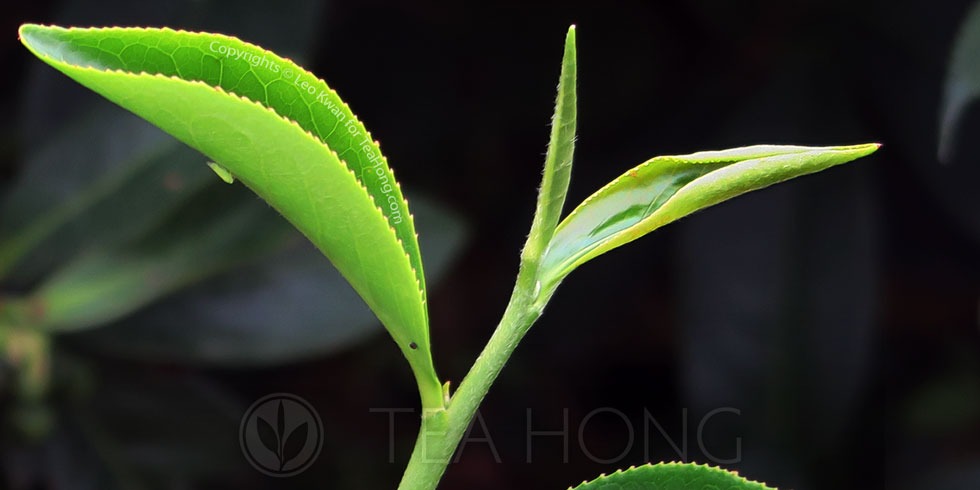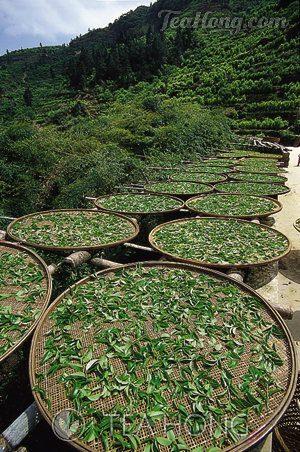

A distorted railway in Nantou caused by the 921 earthquake. Photo courtesy of Huang Guo Feng
At 1:47 am on September 21, 1999, an earthquake broke out in central Taiwan. It was a Richter scale 7.7 massive attack that took away the lives of over 2,400 people and wrecked hundreds of thousands of homes, in addition to creating massive cracks, landslides and destruction of infrastructures. This historic and life-changing disaster is now known as the 921 Quake. A museum has been formed and memorials are held every year. The epicentre was coincidently one of the most important tea production areas, Nantou, where the famous Dong Ding mountain is at.


Notice how small the green tea hopper is compared to a young tea leaf. The curled leaf on the right is beginning to show signs of changes after the bite, the brown spot and changing colour veins.
Like most other tea farmers, Zhang Fu Qin had to be busy with tidying up the rabbles and re-building his home. His tea fields were thus unattended and weeds and bugs went wild. Unlike most other tea farmers though, the 35-years-old saw an opportunity in the distorted, green-leaf-hopper-bitten leaves that was releasing a sweet smell that hadn’t existed before. The biting from this specific minuscule insect triggered a chain reaction that the leaf takes on to change its phytochemistry in order to protect itself from further bug damages. That’s what give the unique aroma.


One of the most important steps in traditional oolong production is sunning. Freshly picked leaves are left under the sun for about two hours.
A Dong Ding original, Honey Concubine oolong, was born.
The bug bitten conditioning is actually exactly the same phenomenon that makes Oriental Beauty, another Taiwan classic, possible. However, the similarity stops there. The two teas each has acquired a different taste profile thanks to the different cultivars, harvest timing and processing techniques.
I shall go into details with photos and/or videos to illustrate when travelling to Taiwan is open again. Generally the farmer waits until the leaves are a little larger for Honey Concubine and process them like a traditional oolong and give them a deeper baking. For Dong Feng Mei Ren, aka Oriental Beauty, the leaves a bit younger and the processing modified with a couple more steps for withering and deeper oxidation. It is rather more akin to a black tea than oolong. Try out the two teas for yourself to compare the distinctive difference and be amazed.


Chen Yu Wen has inherited the legacy of late Master Chen San Zhen to have been further promoting better practices in traditional tea farming and production.
Mixiang Guifei, as how the tea name Honey Concubine is romanised, and therefore acquires another name, Guifei Oolong, is a true and classic thoroughbred Taiwanese tea in the same rank as Oriental Beauty ( Dong Feng Mei Ren ) and Red Jade ( Hong Yu ).
Tea Hong’s selection is deep baked by one of our most gifted, award winning producers, Chen Yu-wen, who has inherited the tea legacy left behind by her legendary tea master father Chen San-zhen. Like the father, Yu-wen has consistently promoted better practices in traditional and true organic farming and processing amongst her peers. The friendly, cooperative and betterment spirit as a region is not seen elsewhere in all of my other field trips.
Comments (0)
Leave a reply
You must be logged in to post a comment.





